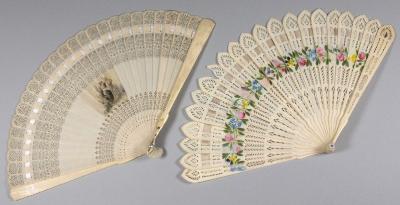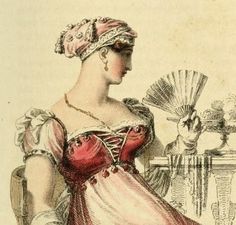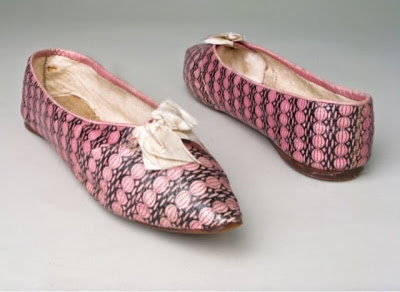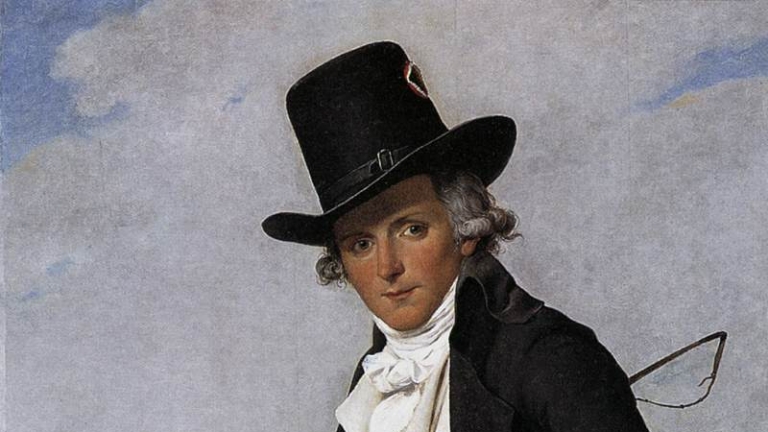Regency Accessories: What you need beyond the dress

by Virginia Solomon, First published for the May/June 2013 issue of Finery

The fashionable Regency lady would not feel her dress is complete without the appropriate accoutrements that will make your ensemble part of the Bon Ton. There are many accessories you could add to your ensemble for different occasions; here is an overview of the most vital of Regency accessories.
First and foremost, one of the most vital accessories would be a fan. The fan serves the important duty of keeping you cool in the summer and in stifling over heated ballrooms. It also provides a method of hiding maidenly blushes, for sharing private conversations or to signal your thoughts to an admirer. Fans could be made of bone, wood or ivory and are often carved and embellished with jewels, lace, tiny paintings, feathers and mirrors. They are miniature works of art to carry and flourish. In the Regency era, fans were generally small and discreet, folding in the frise’ or leaf styles.

Parasols made of cotton, silk or linen, were carried to prevent one’s complexion from the sun and to help prevent freckles. The word “Para Sol” translates in Italian “For the Sun” and had been in use since the early Renaissance. Parasols could indicate status by the materials with which it was made, by jeweled handles and fashionable motifs. Essential for the promenade, parasols frame the face and add charm and gentility to complete your ensemble.
Millinery was essential to the elegant Regency lady and was generally designed in one of four main styles; Caps (generally worn by older married ladies) which were often made of lace or fine lawn; Bonnets – liberally trimmed with feathers and designed to be worn out of doors, or made of straw and simply trimmed with ribbons; Turbans – made of rich fabrics, feathers or accented with jewel brooches and worn in several styles in the ever present neo-classical mode; Hats – made to protect the complexion on sunny days, were often lavishly trimmed and feathered. The exception being the hat worn for riding which was masculine in style, often decorated with a single plume.

Jewelry also evolved to emulate the classical styles, in the same way fashion followed in its gowns. While still popular, jewels were now worn in brooches, as hair ornaments, bracelets and earrings. Often brooches were worn to pin up gowns, sashes and sleeves. Cameos also came into favor (very much in the Roman style) and worn as necklaces, pins, earrings as well as on bandeaus or turbans. Pearls, real as well as paste copies, were used to trim gowns, reticules, turbans and used in hair arrangements.

Reticules or small drawstring purses, were carried by all ladies during the regency. This small but essential accessory would carry your mirror, handkerchief, coins, powder and any other necessity you might need during your shopping, promenade, afternoon visit, or when attending a ball. Given its many uses, these small reticules would be made of many different materials, silk, net, kid leather and decorated with lace, tassels, beads, pearls or elaborate embroidery.

Shawls, like fans, served a dual purpose in that they were worn for the expediency of keeping warm and for displaying one’s wealth and taste. These shawls were often imported from India or the Far East and were made of materials such as cashmere (Kashmir) wool or silk and elaborately embroidered or trimmed. English manufacturers began to make shawls of wool, cotton, lace, and fur. Norwich and Paisley became famous for their shawls that were manufactured and worn throughout the 19th century.
Other accessories that were worn for warmth include: muffs, tippets, mantles, cloaks or the popular pelisse.

Shoes of the period were generally low heeled or flat pumps made of soft leather, kid, or cloth, designed to be worn in the evening or indoors. Out of doors a regency lady would wear half boots or boots made in a variety of materials such as leather, kid or fabric dyed to match your gown or pelisse. Silk or satin slippers were de rigueur for the ball room, often trimmed with spangles, beads and tied with ribbons or buttons of ivory.
We would encourage readers to research online in museums such as the V&A for surviving period pieces. Regency fashion periodicals can also be found, such as Ackerman‘s Repository or La Belle Assemblée, for ideas to complete your elegant Regency ensemble.


Leave a comment